Designed by Alessandro Mendini in 1998, the Alessi Museum contains a collection of over 25,000 items, including prototypes, molds, projects never completed, initial versions, drawings and sketches, to narrate the history of the company founded in Omegna in 1921 by Giovanni Alessi, specialized in manufacturing with wood and metal. To celebrate the 25th anniversary of the Museum and to pay homage to the people and ideas that have shaped the firm’s evolution, in the Milan showroom Alessi has set up a small, precious exhibition that will remain on view until 30 September.
Rather than an exhibit of objects, “25 Stories, the 25th Anniversary of Alessi Museum” is a gathering of narratives. Each series of objects on view, in fact, has been chosen for the story it is still capable of telling today. “Our museum is an extraordinary container of stories that I am still discovering today, after many years of work”, Francesca Appiani, curator of the Alessi Museum, says. “This is the most fascinating aspect of our collection: the materials we keep are living documents that speak of a collective work, the industrial design object, the result of the encounter between the designer and all the professional skills present within the company. To discover them, just walk into the museum and start listening.”
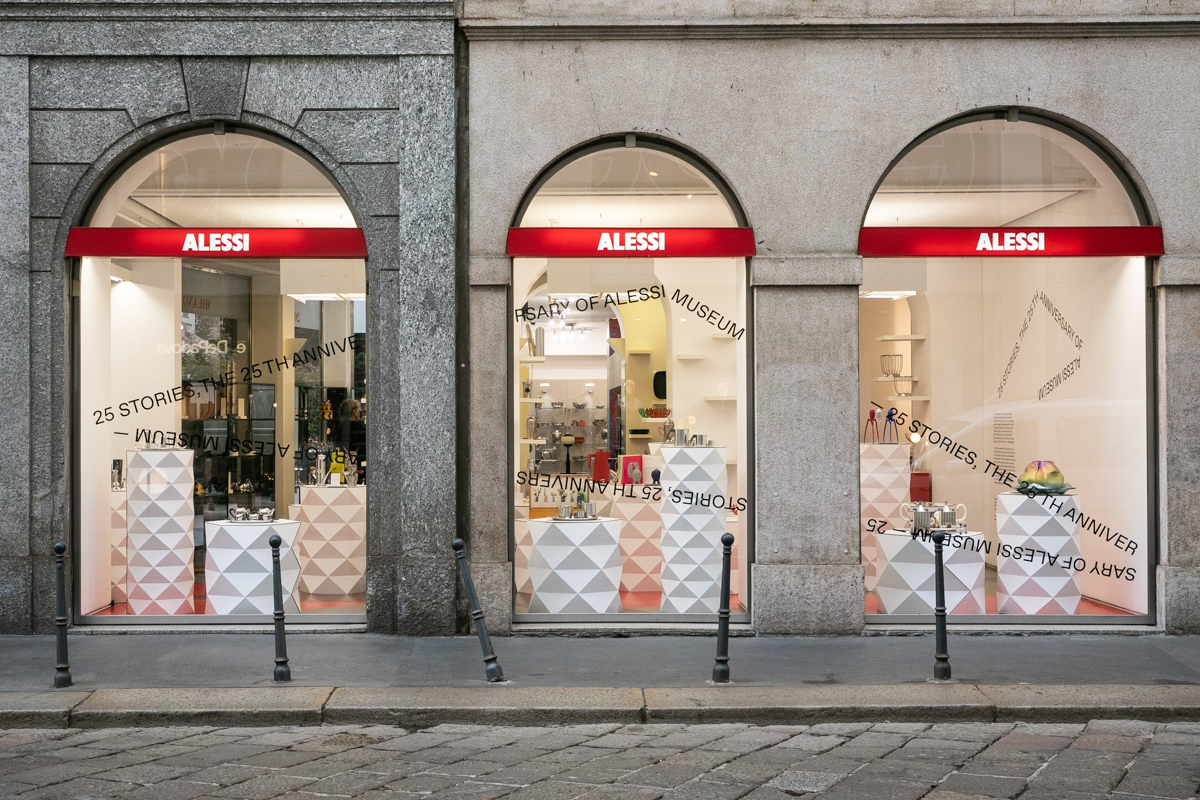
In the second half of the 1990s, Alberto Alessi, the current President of Alessi, decided to create a museum to contain experiments, prototypes and drawings, which he was receiving year after year, at a faster and faster pace, from designers across the globe. He talked it over with Alessandro Mendini, and the result was an architectural design. This was the beginning of the museum’s story, illustrated in this exhibition.
The exhibition includes icons (from the likes of Ettore Sottsass, Michael Graves and Michele De Lucchi) to experiments, and even flops, with a section dedicated to those projects that didn’t quite work, demonstrating the fine line one has to travel to create good design and expressing Alessi’s boundless tension towards innovation.
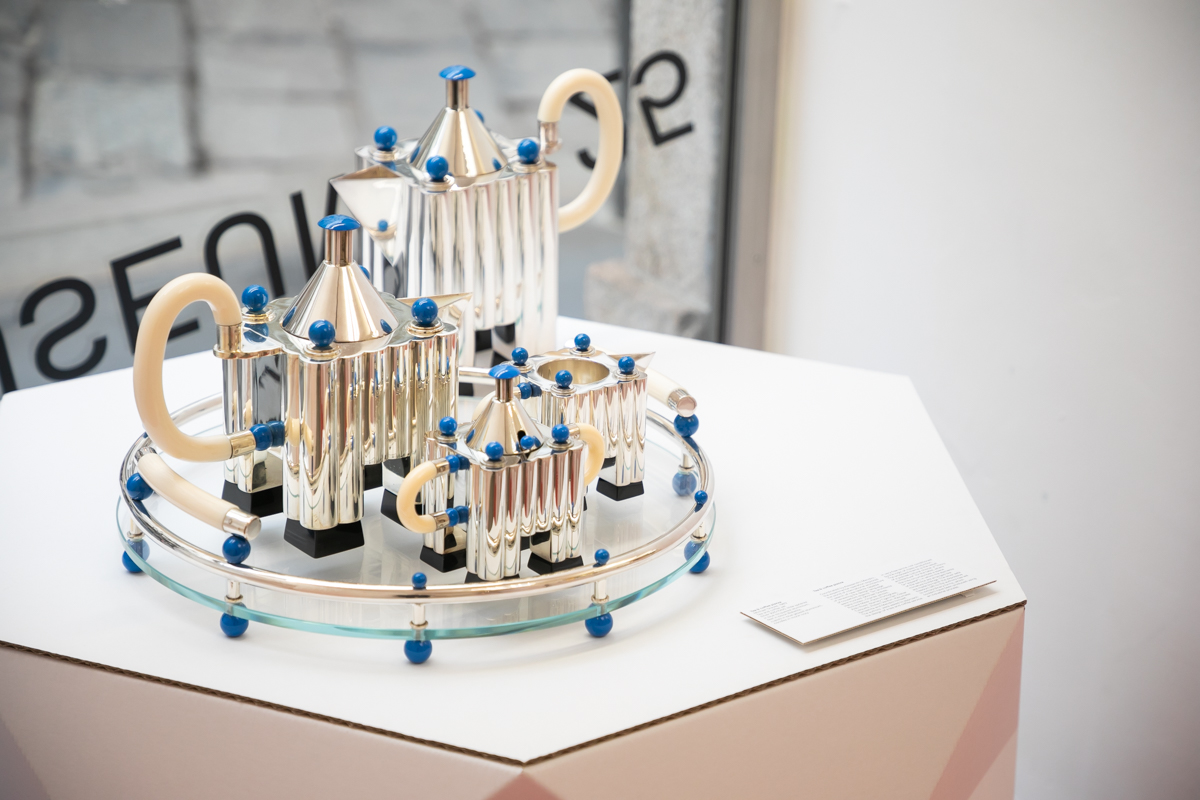
In 1983 Alessi presented the results of a project titled “Tea & Coffee Piazza”. Coordinated by Alessandro Mendini, the experimental operation explored the world of international architecture in search of new talents capable of renewing the design language of household objects. Ten architects were involved: Michael Graves, Hans Hollein, Charles Jencks, Richard Meier, Paolo Portoghesi, Aldo Rossi, Stanley Tigerman, Oscar Tusquets, Robert Venturi, Kazumasa Yamashita and Mendini himself. The authors were asked to approach the design of a tea and coffee service in very free terms, not conditioned by the logic of mass production. The proposed theme is the result of a precise cultural choice: a “micro architecture” for the table, where the tray circumscribes a space (a “square”), in which the elements of the service are arranged like miniature buildings. The silver sets are made by hand: the expressive freedom left to the authors has led to extraordinary forms, which couldn’t have been produced using an industrial process.
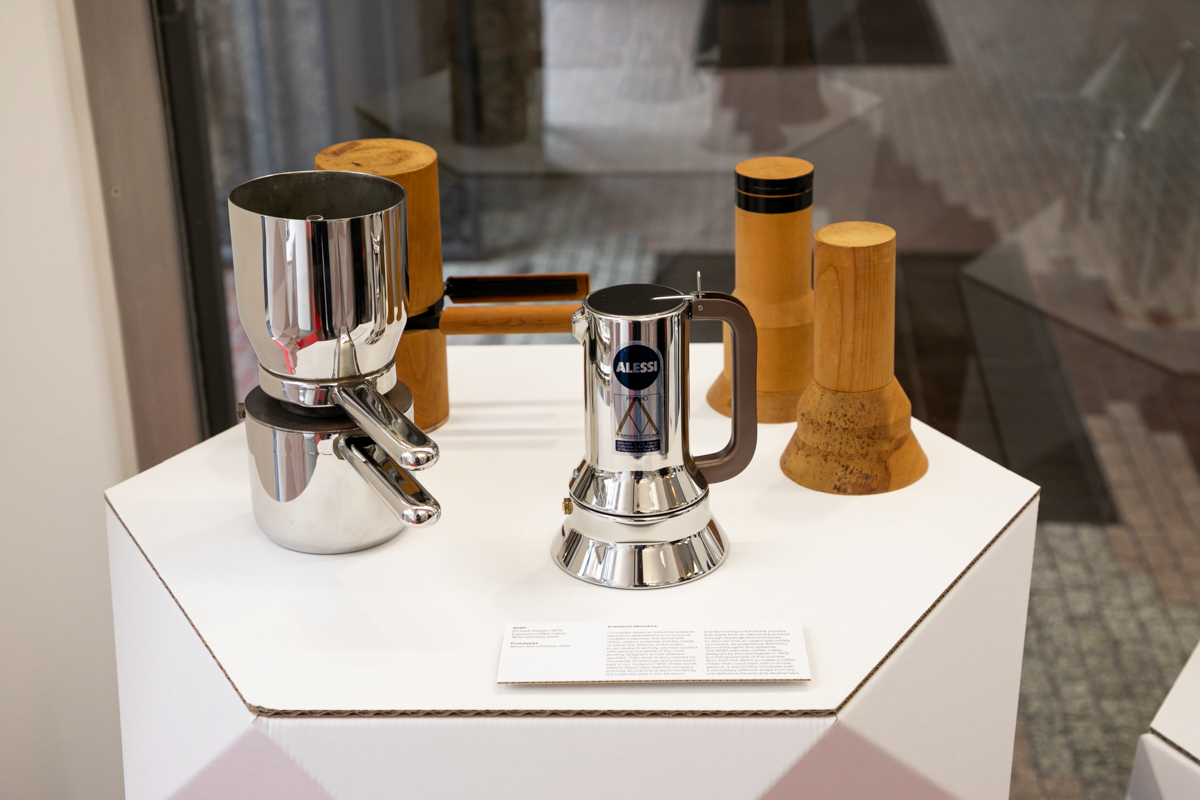
“I consider Alessi an industrial research laboratory dedicated to a continuous mediation between the immensity of the creative potential and the needs, or rather the dreams, of the public. In our research activity, we have worked with several hundreds of the most exciting designers across different decades. Their work is documented by thousands of drawings and prototypes kept in our museum.” With these words, Alberto Alessi describes the company and how its practice is documented by the materials kept in the Museum. It is fascinating to follow the process that leads from an idea to the product through drawings and prototypes, to discover how an object was initially conceived, its progressive definition, second thoughts and setbacks. The 9090 espresso coffee maker, designed by Richard Sapper in 1979, is a fitting example of this process. Born from the desire to create a coffee maker that could open with a simple gesture, it was initially conceived with a completely different shape from the one defined at the end of its development.
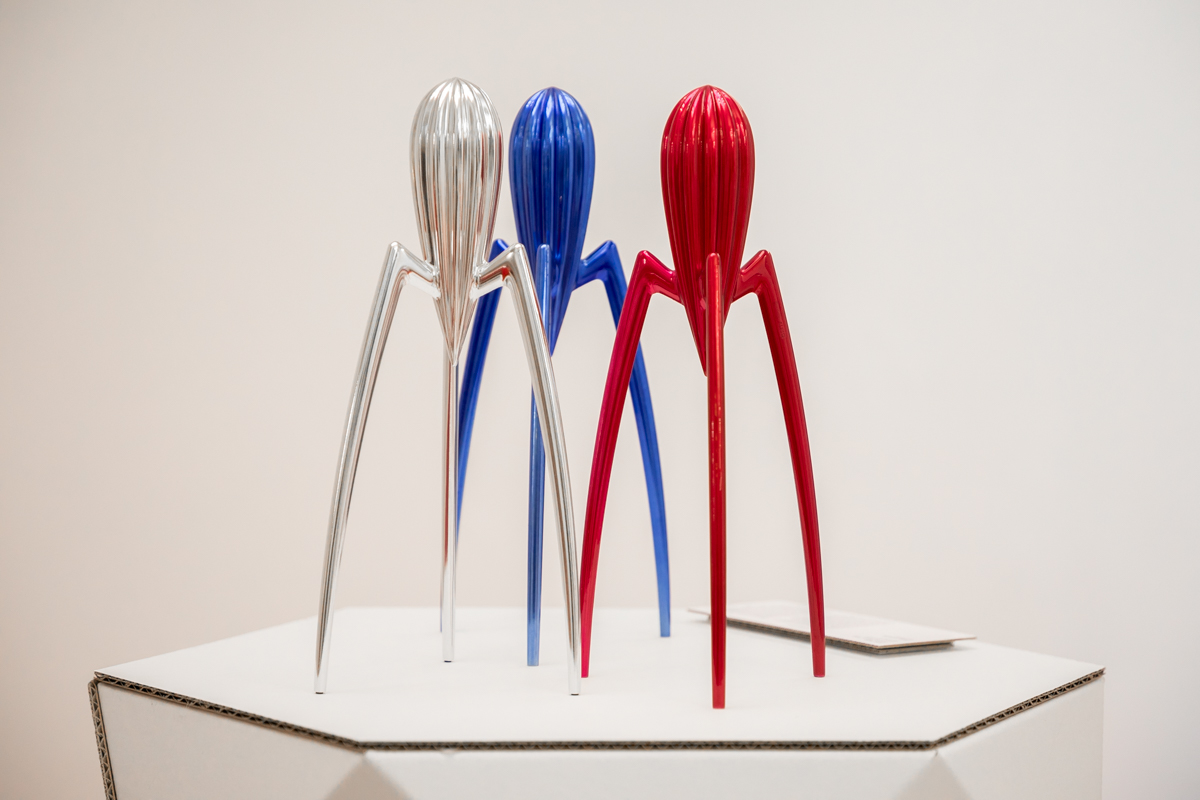
The metaphor of the good gardener – sensitive, attentive and patient – allows us to understand Alessi’s practice. The good gardener sows what he thinks is right, but tills the soil well to welcome the new plants and is full of attention when the first shoots appear, offering great care to allow them to express their potential. He knows that he can also count on the unexpected seeds brought by the wind. Good projects arrive when they decide to: it is difficult to make works of art to order; despite all the efforts, they often follow inscrutable and non-programmable rhythms. A direct consequence of the artistic nature of Alessi is that good projects cannot be ordered at will: there needs to be the right sensitivity and inspiration, and if the moment is not right, you have to wait for it. In the Museum is a multitude of projects that reflect this process, such as the Juicy Salif juicer, one of the best-known Alessi products, whose design was the response to a request for a new tray.
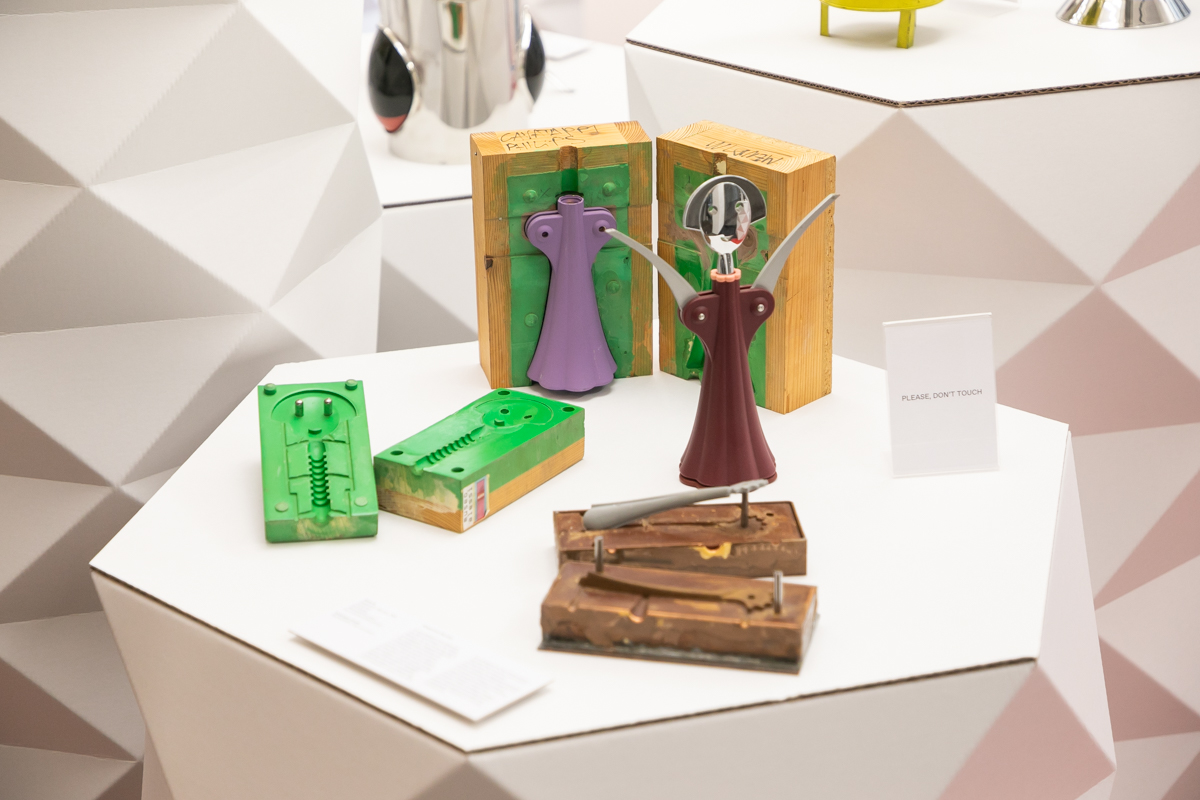
In an installation that celebrates the 25th anniversary of the Alessi Museum, we can’t fail to pay tribute to its designer, Alessandro Mendini. The collaboration between this unforgettable author and Alessi is not limited to just the museum, but was so special that it is difficult to describe it in a few words. He was the company’s official historiographer, and in 1979 he created Paesaggio Casalingo (Domestic Landscape), historical research on Alessi’s role in the housewares industry since 1921. As a designer, he has created objects that have become iconic, such as the smiling Anna G. corkscrew. As an architect, he designed the facade and two extensions of the Alessi factory in Crusinallo di Omegna, as well as various temporary exhibitions dedicated to the company’s history and research. Finally, as design manager, he conceived and coordinated some project that transformed Alessi into a real research laboratory in the field of applied arts.
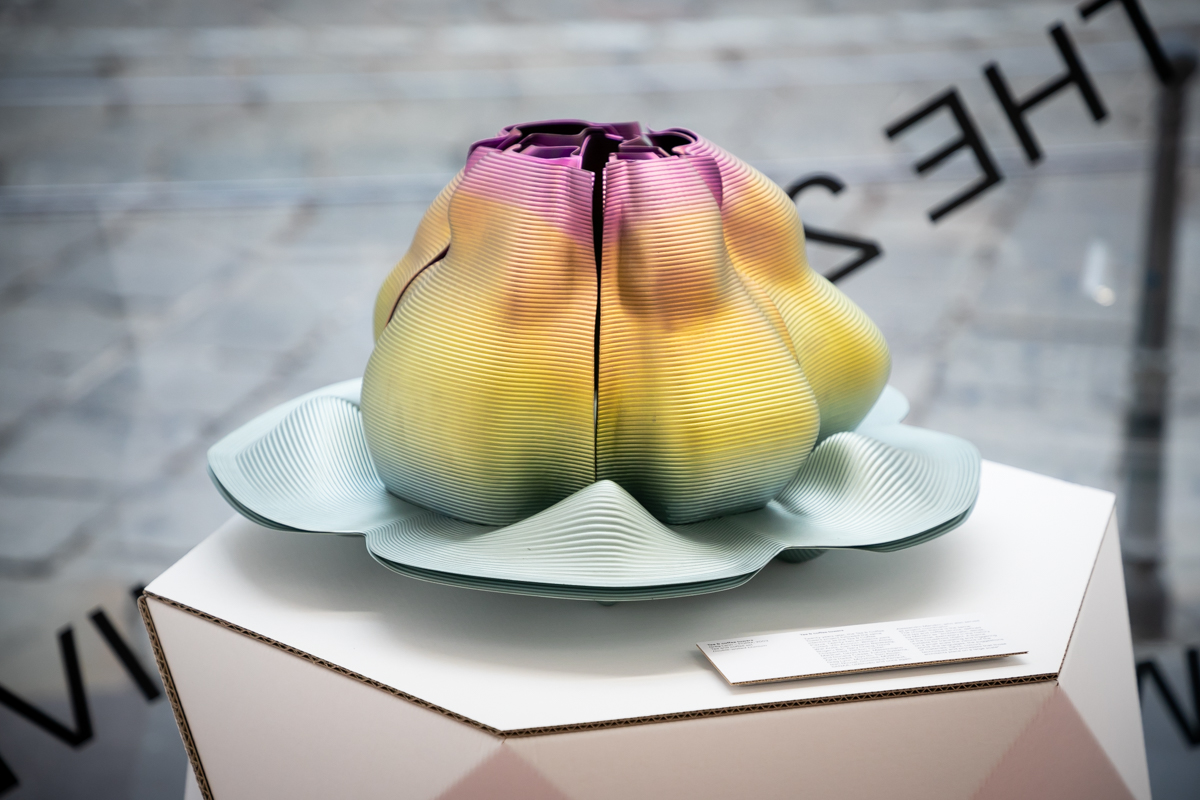
Twenty years later, the Tea & Coffee Towers project followed the same intentions as the Tea & Coffee Piazza. Twenty-two architects were invited: Vito Acconci, William Alsop, Wiel Arets, Juan Navarro Baldeweg, Shigeru Ban, Gary Chang, David Chipperfield, Denton-Corker-Marshall, Dezsö Ekler, Massimiliano and Doriana Fuksas, Future Systems, Zaha Hadid, Toyo Ito, Tom Kovac, Greg Lynn, Morphosis, MVRDV, Jean Nouvel, Dominique Perrault, SANAA, UNStudio and once again Alessandro Mendini, who also served as project coordinator. The chosen theme is the same: the tea and coffee service, defined by Mendini as “emblematic, dense, ceremonial, exemplary in the history of the household object. A theme suitable for translating and triggering on a small scale the visions of the world, the languages, the suggestions of materials, lights, colours, techniques and processes that those architects place on a large scale”. The architects had the same freedom in addressing the proposed theme, which is reflected in twenty-two projects full of unprecedented cultural, aesthetic, anthropological and technological ideas.







